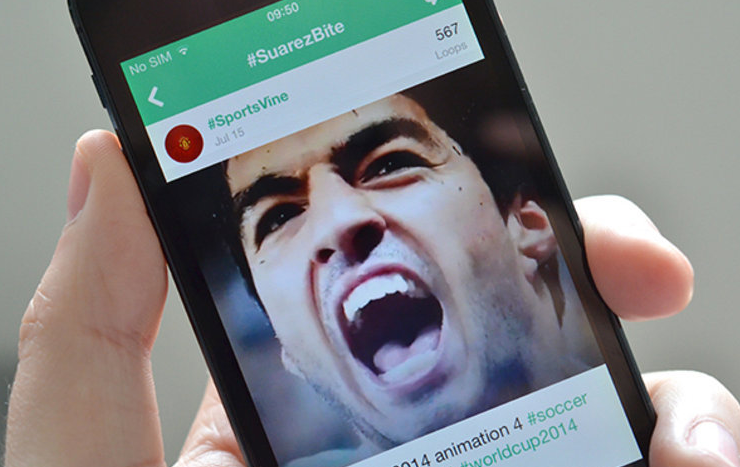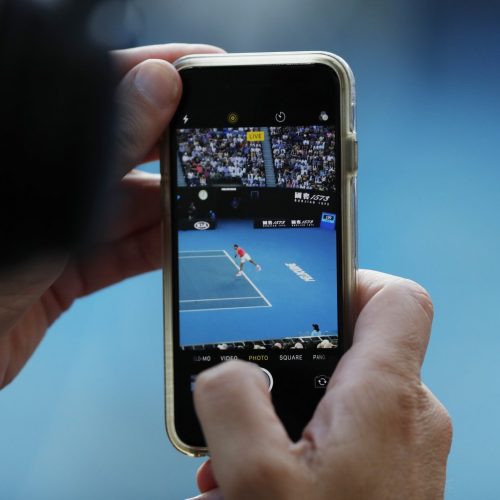Why Vine is becoming a nightmare for the Premier League
Guest Post: Tom Kelk is a tech/sport blogger and Senior Social Exec at communications agency, Pitch. You can find him on Twitter (@TomKelk), LinkedIn and his blog
It arrived with quite a media force, “Premier League set to clamp down on unofficial Vine videos of goals as they get tough on copyright laws” announced the Independent, who were amongst a number of leading publications to debate the issue. We knew it was coming. It had to. Rights holders weren’t just going to sit-by and let it happen.
Policing it is a different matter, and one that the Premier League, Vine and Twitter will have their hands-full in achieving. Certainly, fans don’t seem too bothered by the warning so the ball is absolutely in the court of the Premier League to make a headline statement. One week on from the Premier League announcement, however, and Vine has given the Premier League another real headache.
In (finally) announcing an update, Vine has given users the opportunity to upload clips to the app, and edit clips within the app. We now have slow-mo, as well as being able to merge Vines together and all of this can be previewed and undone. Editing can go up to several layers of camera tools, such as focus lock, ghost mode and torch mode (for shooting in low-light).
This is a whole different ball-game, and one that rights-holders will not relish taking on. There will be a number of Twitter users eyeing-up this update with a view to starting historical sports accounts, for example, and these accounts will be especially difficult for rights-holders to police because it’s available to all.
Of course, users have been able to do this for a while, via a couple of methods. Nike for example have been doing this with hugely success.
However, the more casual consumer now has the control, and rights holders will have to be conscious of the use of historical content as policing live content is far easier than the murky world of older content.
So what does this all mean for the content on Vine? Well, we ran a little Twitter poll on whether this change was a good thing for fan engagement, or whether, in fact, it would limit the creativity of Vine users. Opinions were largely divided. Here are a few of the responses:
@WePlayCo @DigitalSportUK 90% of the most creative vines are uploaded. Few are made in app – this move makes it easier to do it natively — Christian Baker (@ChristianBaker0) August 21, 2014
@OnlineRule @DigitalSportUK you’ve still got to be creative to fit what you want to say in six seconds. That’s what Vine was about for me
— Rhodri Williams (@VoyezLesprit) August 21, 2014
@DigitalSportUK I’m sceptical about the changes. Surely it’ll just become a six-second YouTube? Removes the creativity. — The Online Rule (@OnlineRule) August 21, 2014
@DigitalSportUK The beauty of vine was the ‘realtime’ element that forced clubs to be creative.I hope more control won’t = poorer engagement — Ashley Joseph (@AshJoseph9) August 21, 2014
All very fair points, and there will be evident examples of each, I’m sure. What needs to be avoided, is Vine just becoming another simple media platform that shows short ads with little platform-specific effort. In its favour, Vine’s six-seconds means that users still have fit that content into such a short period of time and creativity is required to achieve that. For me, I’ll likely record the video on my normal camera and upload to Vine. This provides a better starting quality for content. Really, if there’s an appetite to create great Vine-specific content (and there’s a strong argument to say there should be), then the creativity won’t drop. What Nike does is still creative – it just takes more behind the scenes work before uploading.
What do you think? Will the creativity of the content on Vine improve or be lost? Will the Premier League lose its battle with Vine copyright infringers?
About author
You might also like
Mallory Group Launches White Paper on the ‘New Normal’ for Sports Rights Holders
Sport is proving to be one of the high-profile business casualties of the Covid-19 pandemic. However, its slow and structured return will be a key factor in life entering the
The seven essentials for achieving successful sports branding
By Daniela McVicker When it comes to sports, great branding is a must. Your brand influences how people see your company or team. It helps you to forge connections with
Live Chat: A New Social Experience in Sports
Article written by John S. Kim, CEO and co-founder of global API company SendBird Social media rose to prominence throughout the world due to its potential for connection. Social channels provided the








